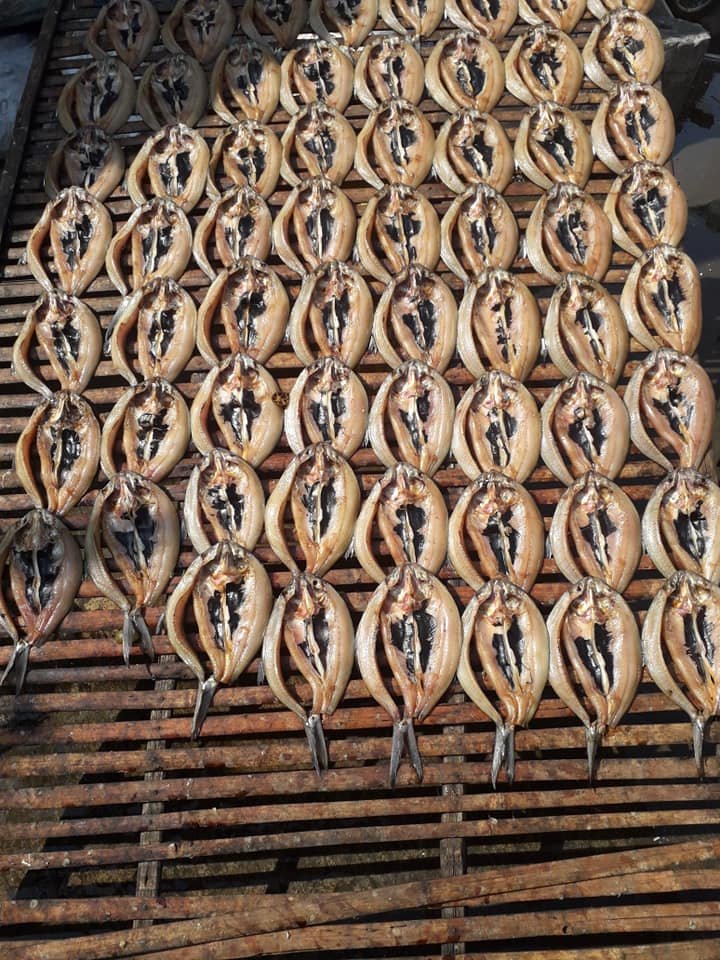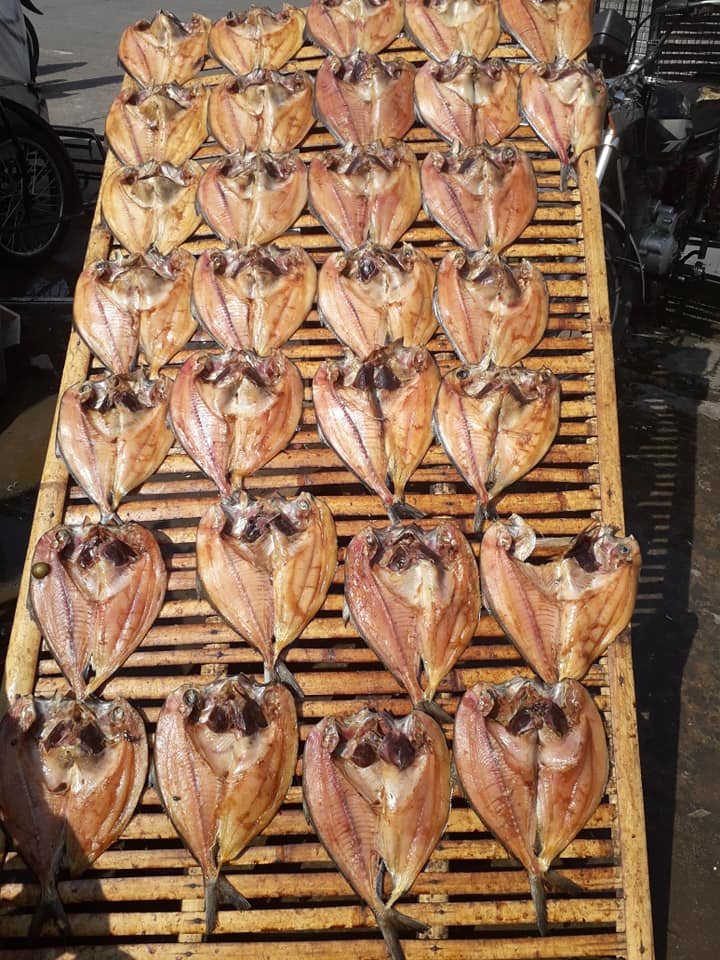The Lamayo. Wow.
The lamayo is fish, usually freshly-caught, slit lengthwise/butterflied, salted and sun dried for half a day. Sun drying is done partially to retain the juiciness of the flesh. Before the advent of refrigeration, the lamayo was meant to be eaten within the day, otherwise, the fish would stink if stored the same way one keeps uga (fully-dried and thoroughly salted fish).
For over 30 years, since they were single ladies, Inday and Helen Diarota whose husbands are brothers, have been in the lamayo-making and – selling industry. The women live in Brgy. 12 where they are only two of 15 lamayo makers there. No two recipes are alike, so, a buyer could consider being a suki of a particular lamayo seller if the wares are to the buyer’s taste.

Inday and Helen’s lamayo timpla goes like this:
For one baniera of fish, add 3 lipids of soy sauce, 1 lipid of genuine tuba vinegar sourced from Brgy. Granada, 7 heads of garlic, 1 kilogram of calamansi, and ¾ kg. of coarse sea salt. Oh, I almost forgot the P3 sachet of MSG they sprinkle in the add flavor. Uh-oh since Monosodium Glutamate, fermented crystals from sugarcane, is not what it used to be. Yet, everyone knows that the main ingredients are sea, salt, and sun. So, now, would you like to know how they make lamayo?


Usually, a dealer of fish supplies them with different kinds of fish from Cadiz or Tabao (Valladolid), the most usual are bangrus (bangus, milkfish), carajo, and buli-buli. The fish are delivered early enough for the women to butterfly the fish, wash these, and marinate for 5 to 10 minutes in the ingredients above-mentioned. They have to be done in time to catch the strong morning sun. The fish are now ready to be neatly laid out on the rectangular bamboo slat dryer. Then, drying starts just around 9 until 11 in the morning. What happens if it is the rainy season? Then, air-drying is resorted to. This business has no season and the goods are in demand the whole year round.

Let’s Talk Business
By early afternoon, hawkers can be seen milling around the downtown area or at the public market with their makeshift wooden trays on which lamayo are displayed by the atado. Each atado for any kind of fish is either at P50 or P100 depending on the size and quantity. The most popular is the carajo lamayo – its flesh soft, white and flaky.

Bangus lamayo 
buli-buli lamayo
So, how’s business? Same-same. So-so. It is especially hard now that vendors are no longer allowed to sell by the sidewalks of the Bacolod Public Market. They have lost a substantial number of their customers. So, what happens to unsold goods? Whatever is left is stored in a cooler with lots of ice (the ladies do not own a freezer, unfortunately). The next day, the fish are washed and marinated in newly-mixed marinade to refresh the flavor. Then, they are sun-dried in the bright morning sun. This is the final ingredient to the lamayo that finds its way to the tables of Negrense households – fried and dipped in the indispensable sinamak – eaten regardless of social class. With every morsel are the underlying factors of gender equality where both men and women work together, and economy where this ancient micro-enterprise lives on through the centuries as long as the fish of Negros continue to thrive.

